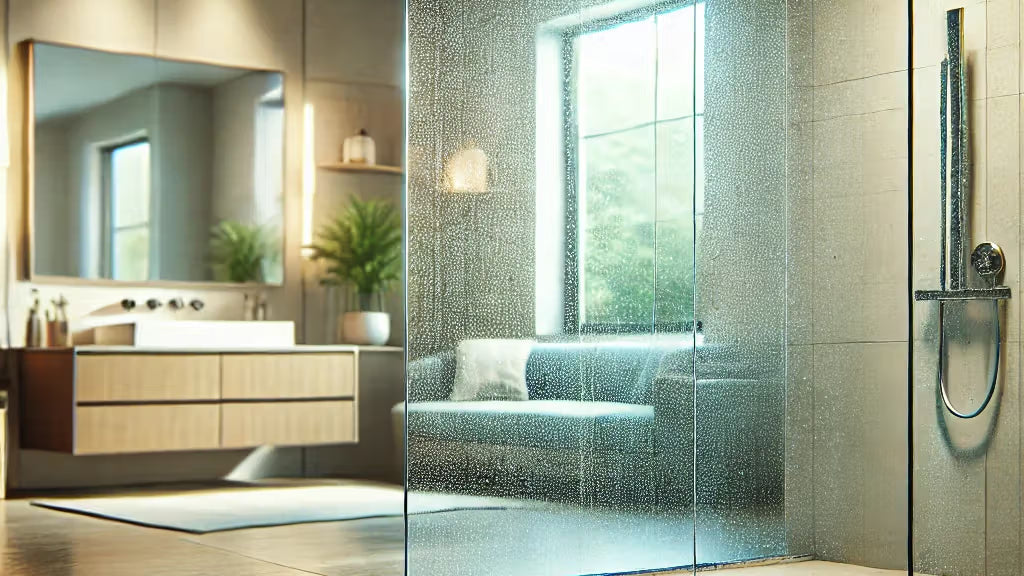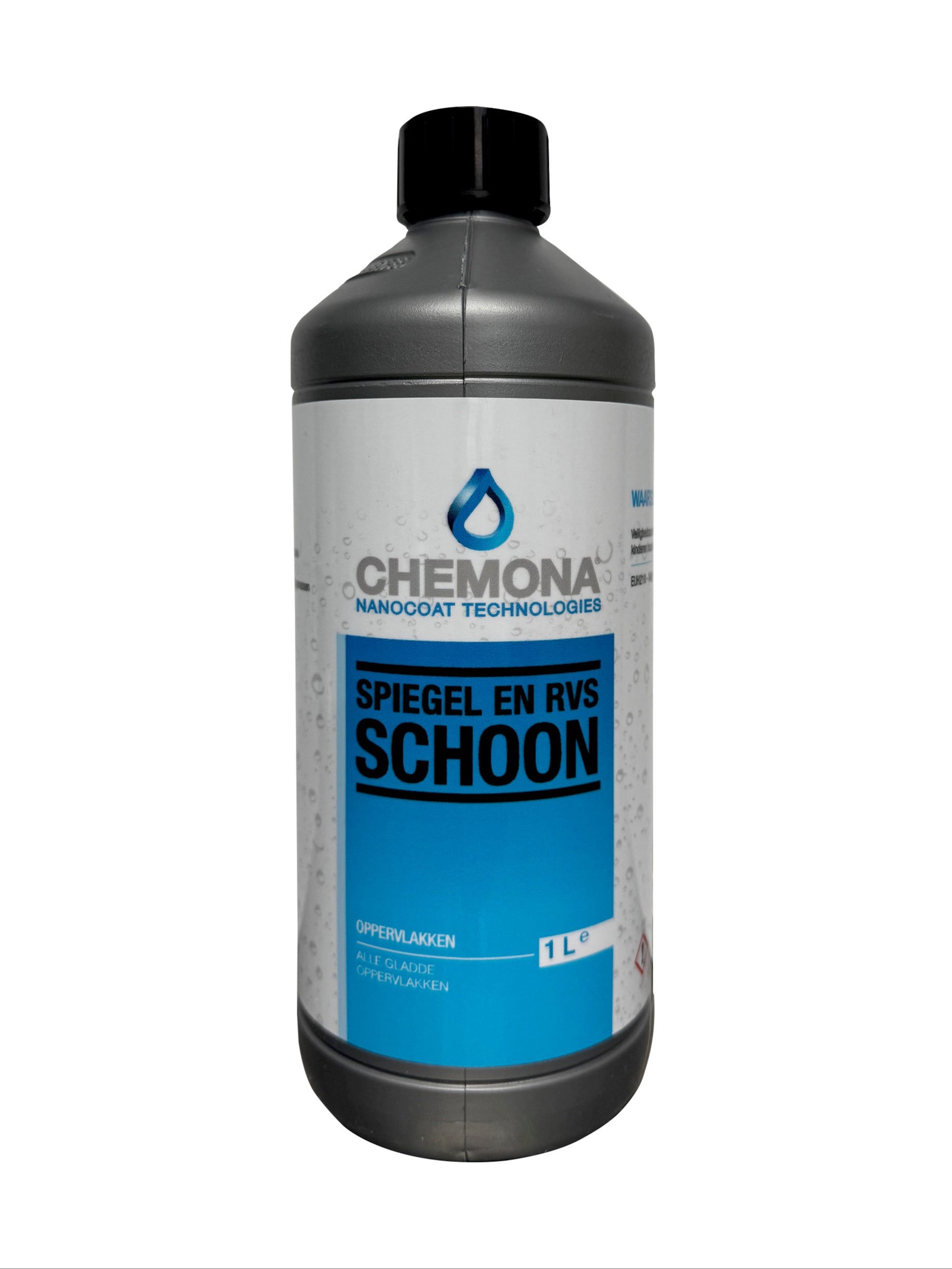Glass and ceramic coatings are smart solutions for protecting surfaces from external influences. They repel dirt, water, and UV rays, and can even prevent light scratches. This not only extends the lifespan of materials but also gives them a polished appearance. Think, for example, of glossy car paint, clear windows, sleek facades, or saltwater-resistant ship hulls. Both coatings appear similar, but there are clear differences in composition, lifespan, and applications. In this blog post, we compare their properties and discuss the advantages, disadvantages, maintenance tips, and frequently asked questions. We also pay special attention to ceramic coatings for cars, as this is one of the most popular applications.
What is a glass coating?
A glass coating is a protective layer composed primarily of silicon dioxide (SiO₂) . This material forms a thin, hard layer on the surface and is known for its hydrophobic properties: water and dirt simply roll off. This keeps glass cleaner longer and reduces the risk of stains and residue. Glass coatings are often applied to windows, mirrors, and car paint for temporary but effective protection. Their lifespan is typically between six and twelve months, depending on the conditions and level of maintenance. For those looking for a quick and affordable solution to protect and refresh surfaces, a glass coating is a practical choice. It's also easy to apply, making it suitable for DIY use.
What is a ceramic coating?
A ceramic coating goes a step further and is therefore popular for more demanding applications. Besides silicon dioxide, the composition often contains titanium dioxide and polymers , making the protective layer thicker and stronger. This provides durable protection that is resistant to UV radiation, chemicals, scratches, and extreme weather conditions. While a glass coating lasts a year at most, a ceramic coating can offer protection for three to ten years. This makes it a cost-effective long-term solution. Ceramic coatings are primarily used on automotive paint, boats, facades, and industrial machinery, where intensive use and durability are key. The coating also offers a deep gloss, keeping surfaces looking new for longer. This makes it not only practical but also aesthetically pleasing.
What are the advantages and disadvantages of glass coatings?
A glass coating has several advantages that make it attractive, especially for short-term use. First, its hydrophobic properties prevent rain and dirt from adhering effectively. This simplifies cleaning and gives surfaces a bright, fresh appearance. Furthermore, the product is affordable and easy to apply yourself, making it accessible to a wide audience. The sheen added by a glass coating also gives surfaces a luxurious look. However, there are drawbacks. Its lifespan is relatively short, often only six to twelve months. Furthermore, the coating offers limited scratch protection and requires regular maintenance to maintain its effectiveness. For heavily used surfaces, such as car paint or boats, this can be a limiting factor.
For which applications is a ceramic coating suitable?
A ceramic coating is versatile and used in a wide range of sectors. In the automotive world, it's one of the most popular choices for paint protection. Cars are exposed daily to UV rays, dirt, and scratches and benefit greatly from their durability and water-repellent properties. In construction and architecture, ceramic coatings are used to protect facades, glass, and floors from the elements, pollution, and even graffiti. The maritime sector also makes extensive use of this technology: ship hulls are protected against salt water, algae, and UV rays, significantly reducing maintenance costs. Finally, ceramic coatings are used in industry , where machinery and equipment must be protected against chemicals, wear, and high temperatures. This extends the lifespan of installations and reduces maintenance costs.
Why choose a ceramic coating for your car?
Car paint is fragile and exposed daily to harmful influences such as UV radiation, bird droppings, road salt, tar, and minor scratches. A ceramic coating offers long-lasting protection against these, making it a smart investment. The paint remains protected for up to five years, depending on the product and maintenance. The coating also provides a deep shine that enhances the car's appearance. Thanks to its hydrophobic properties, dirt adheres less quickly, making washing much easier. While the coating doesn't offer complete protection against deep scratches or stone chips, it does prevent minor scratches and friction. This keeps the car in top condition for longer and preserves its value. For car enthusiasts who want to combine convenience and durability, a ceramic coating is practically indispensable.

How is a ceramic coating applied?
Applying a ceramic coating to a car is a precise process that is often best handled by a professional. First, the car is thoroughly cleaned and, if necessary, polished to remove imperfections in the paint. This is followed by degreasing so that the coating can adhere optimally. Next, the coating is applied in thin layers with an applicator. This requires precision to prevent streaks or spots. Finally, the coating must cure, a process that can take anywhere from several hours to a day. In some cases, heat treatment is used to accelerate this process. Although DIY kits are available, professional application is often the better choice for a durable and smooth result.
How do you maintain glass and ceramic coatings?
Maintenance varies depending on the type of coating. A glass coating requires more frequent reapplication, usually annually. Regular cleaning with mild detergents and a soft cloth helps extend its lifespan. Avoid abrasive products that can damage the coating. Ceramic coatings require less maintenance, but are still important. Always wash the car or surface with pH-neutral shampoos and avoid harsh brushes. Hydrophobic sprays can enhance the effect and ensure water beads off longer. An annual inspection by a specialist helps detect and repair damage promptly. Proper maintenance is essential to maintain the benefits of both coatings and ensure optimal performance.
Frequently asked questions about ceramic coatings
Is a ceramic coating the same as wax?
No, wax usually lasts a few months, while a ceramic coating provides protection for several years.
Can I apply a ceramic coating myself?
That's possible, but it requires precision work. For a smooth and durable result, professional application is better.
Does a ceramic coating protect against stone chips?
The coating provides light protection, but for full coverage, paint protection film (PPF) is the best solution.
Conclusion: glass coating or ceramic coating?
The choice between a glass coating and a ceramic coating depends on the desired application and your budget. Glass coatings are affordable, easy to apply, and perfect for short-term protection. Ceramic coatings are more durable, versatile, and ideal for those seeking long-term protection. At Chemona, you also choose PFAS-free nanocoatings : an environmentally friendly solution that protects both your surfaces and the environment. Whether you want to protect your car, facade, or boat, with Chemona's coatings you choose quality and durability.
👉 Discover our range and give your surfaces the protection they deserve.

